Notes from the Field: A Growers Perspective – Ben Kraus Chat #10
Welcome back to our eleventh report of 2025 Notes from the Field! As a reminder, this year’s Notes from the Field will follow Ben Kraus with Gwenyn Hill Farm (Waukesha). The goal of this newsletter is to hear from the grower’s perspective and foster connection between fruit growers.
We’ll be focusing our discussions on phenology/fruit development and integrated pest management. This week, Ben will be wrapping up picking the last of the Contender peaches and will begin picking a few apple varieties, including Pink Pearmain and Jeffries. The day neutral strawberries are continuing to produce, and the raspberries have slowed down for the season. Most of the table grape varieties have hit veraison and will be ready to pick in the coming weeks. The majority of fruit picked are available at Gwenyn Hill’s on-site farm stand. As for pest management, Ben is continuing to monitor for codling moth and apple maggot trap captures. In 2024, there was a late flush of codling moth in September that hit the pears quite hard. Ben is also monitoring weather forecasts and the nearest NEWA weatherstation (Colgate, WI) for late-season disease infection periods in apples and grapes.
I met with Ben on Monday, August 25th to take a look at ripening fruit as we move through harvest. As a reminder, Gwenyn Hill has a 4-acre block of tree fruit and berries that sits along a north-facing slope, and ~150 table grape vines bordered by saskatoons and rhubarb across the road. Since my last visit, weather has been much drier and the temperature has begun to cool down slightly. According to NEWA, over the past ~two weeks (August 12-25), there was an average high temperature of 76.9℉, average low temperature of 60.7℉, and a total of 0.89” of precipitation near Gwenyn Hill (NEWA – Colgate, WI).
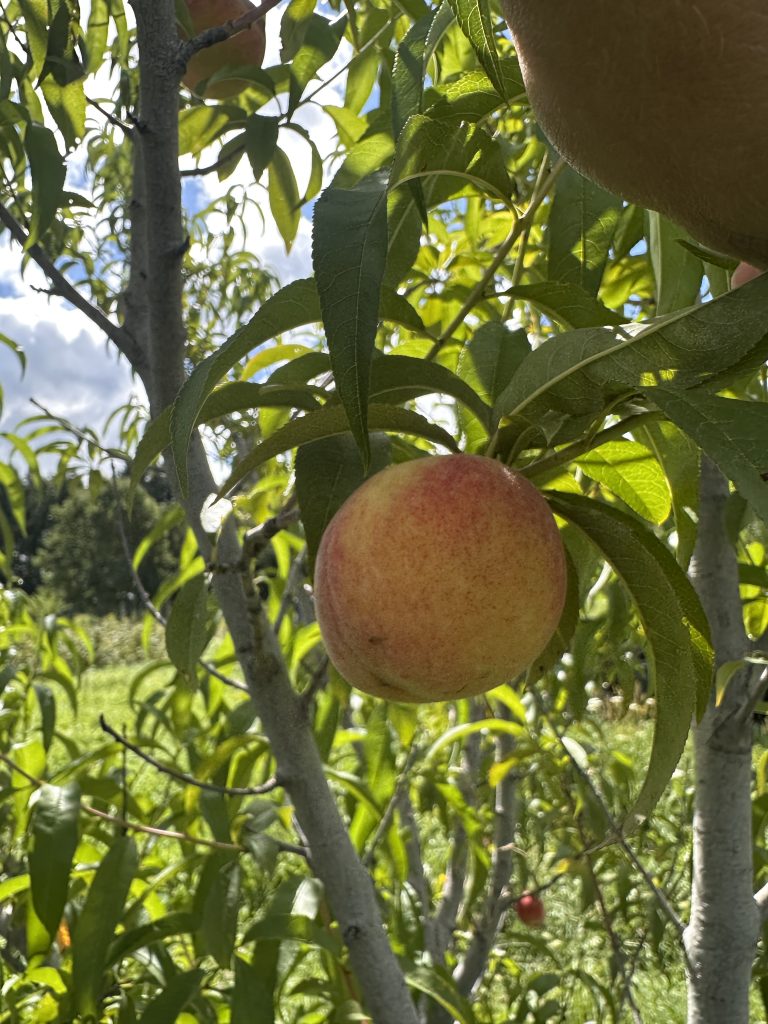
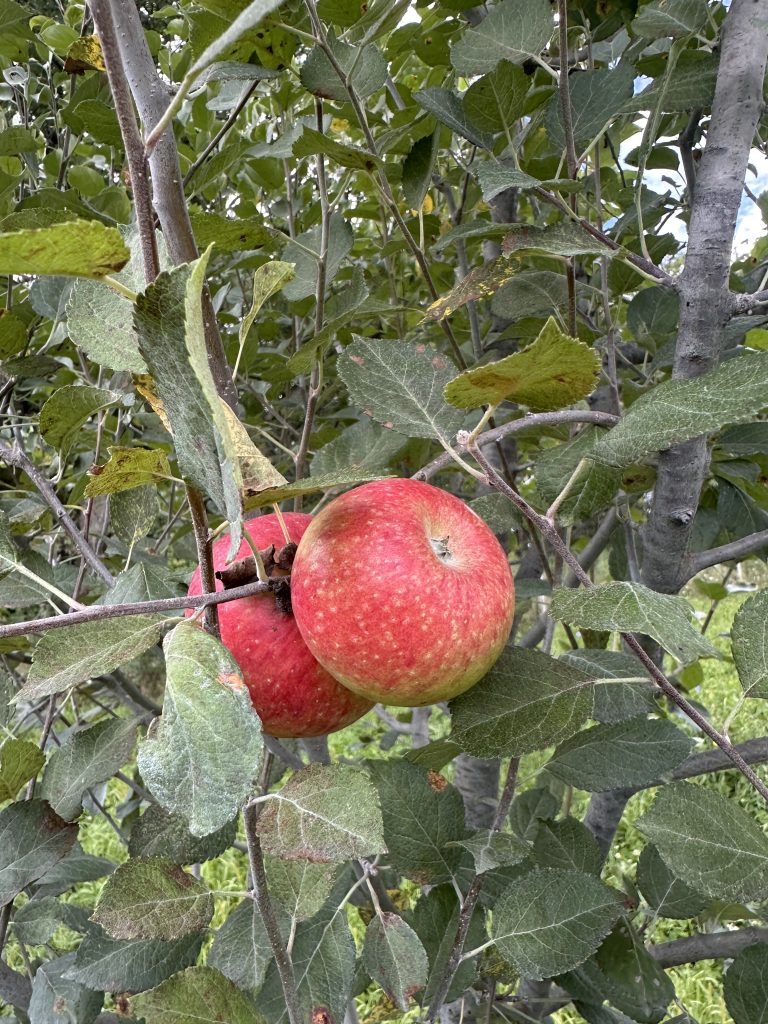
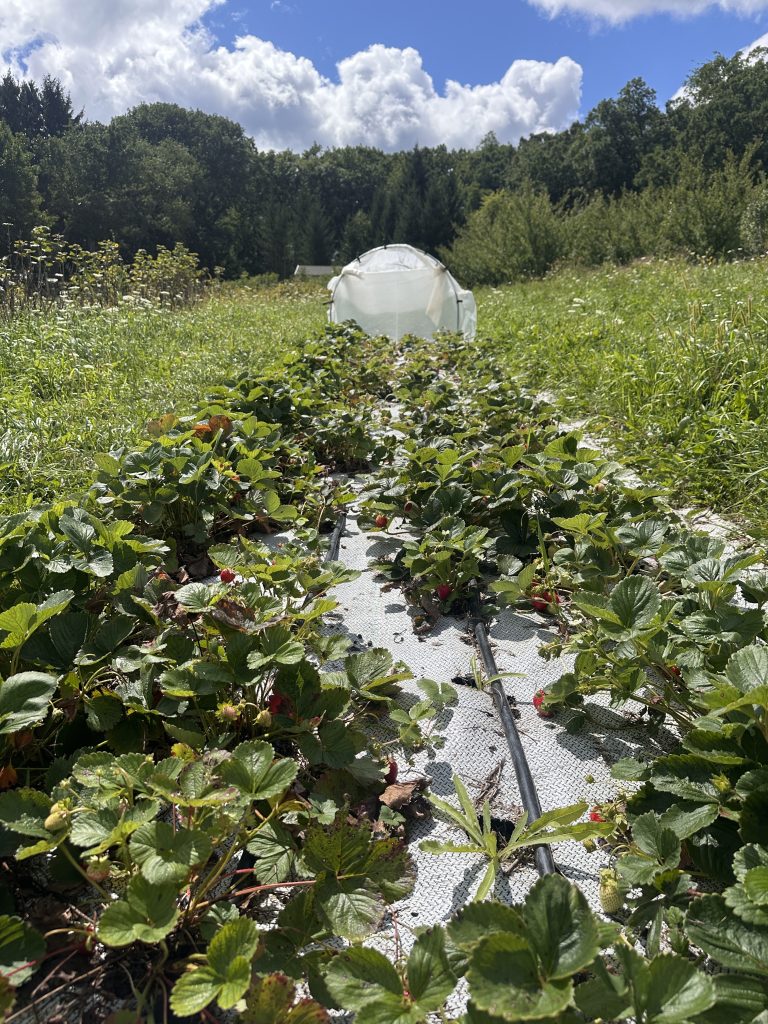
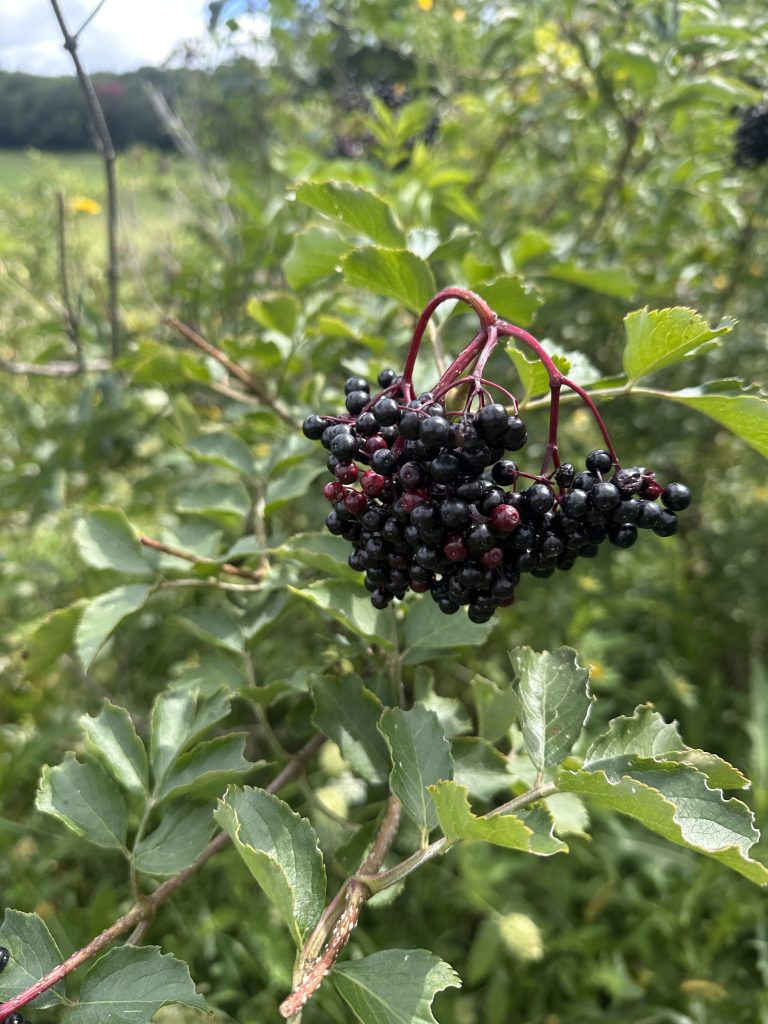
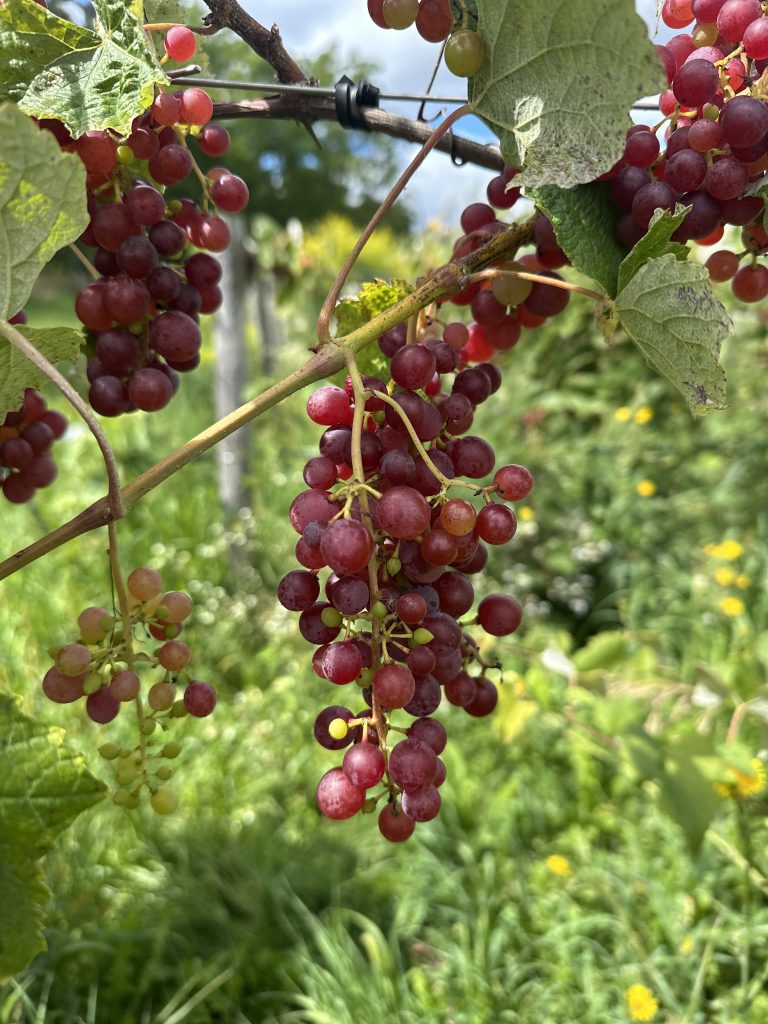
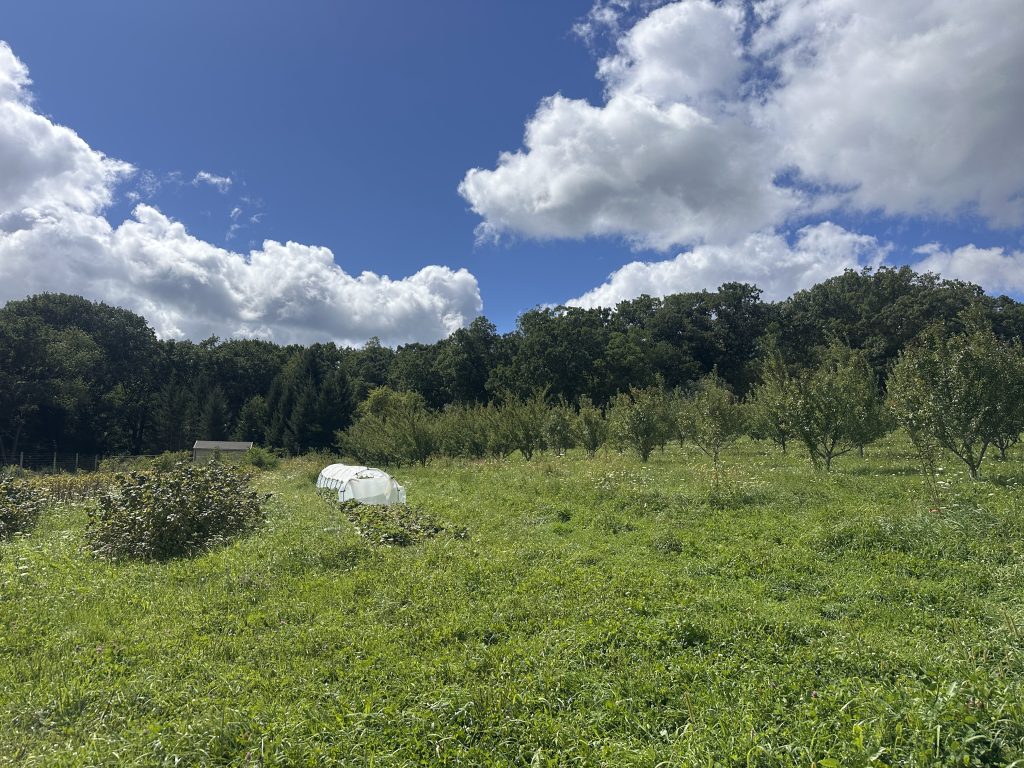
For disease management, Ben plans to continue using Potassium Bicarbonate and LifeGard WG (Bacillus mycoides isolate J) as needed for tree fruit diseases like sooty blotch and flyspeck and bitter rot. Even though black rot hit many vineyards hard this year, there is still a good crop ready to be picked. Ben is considering testing out Oxidate 5.0 (hydrogen peroxide, peroxyacetic acid) in his disease management rotation next year in hopes to limit black rot incidence.
For insect management, Ben is continuing to monitor any further codling moth trap captures and will apply the last round of Cyd-X (Cydia pomonella granulovirus) to target potential late-season impacts to pears. Codling moth larvae tunnel into and feed on the core of the fruit, often leaving a dark, “dusty”-appearing substance (frass) around the entry wound. Internal fruit feeding often leads to necrosis (fruit breakdown), making the fruit unmarketable. Sometimes, larvae may be unsuccessful in entering the fruit, leaving a small blemish, often referred to as a “sting”, in place of tunneling wounds. Ben is also continuing to monitor apple maggot red sphere traps around the perimeter of the orchard, still with zero catches so far this season.
Gwenyn Hill has quite a diversely planted apple orchard that ripens across a relatively wide range of time. One of the benefits of using OMRI products is the flexibility of the short Pre-Harvest Interval (PHI). This flexibility allows Ben to manage the diverse range of apple varieties more effectively, right up until harvest to tackle some of the late-season insects. This year, however, there is an overall low apple fruit load, likely in part due to early season freeze damage to developing buds.
That’s all for this week’s Notes from the Field. Good luck and best wishes to all WI Fruit Growers as we work our way through fall harvest!
This article series is NOT intended to be prescriptive for other orchards. It is simply an opportunity for our readership to hear from other growers about their experiences growing fruit crops in Wisconsin.
Growing the same crop does not always justify the same practices. Management decisions at your farm should be tailored to your operation and consider location, regional climate, disease and pest history, and your varieties.
The mention of a product is NOT an endorsement. Always follow the instructions on product labels and consult weather stations (ex. NEWA) in your area for current weather forecast and disease and pest prediction models.
This article was posted in Notes from the Field and tagged Ben Kraus, Josie Dillon.
